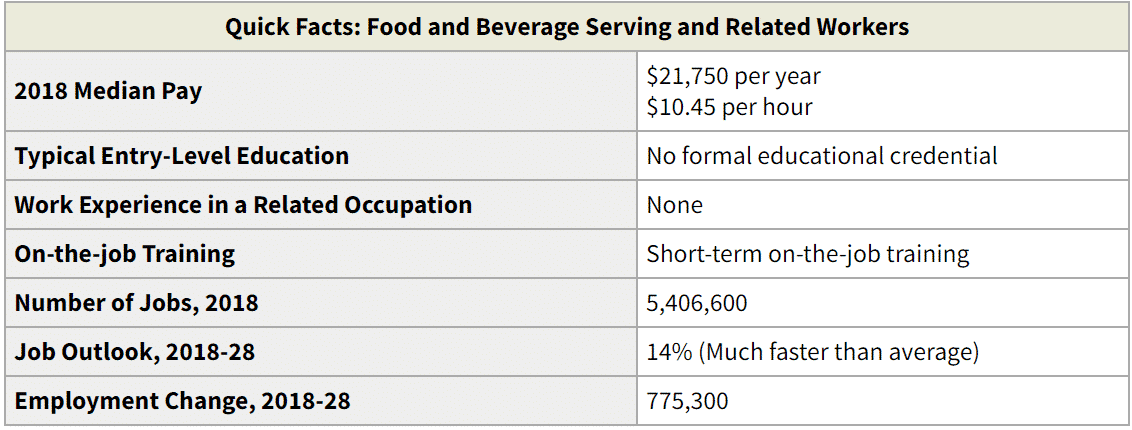Learn about the Food Truck industry and find information on starting a mobile food business. Don’t forget you can receive free or low-cost training and free professional business advice, from your local Small Business Development Center!
View our related business reports here: Full Service Restaurant Business, Fast Food Restaurant Business and Bar Business, and Food Service Industry Research.
Get a free Food Truck business plan template on our Business Plans page.
Food Truck COVID-19 Resources
In response to the global COVID-19 pandemic, shelter-in-place orders and physical distancing measures have affected many businesses; here is a look at the impact to the Food Truck industry. Without physical buildings, mobile food vendors avoided many of the new government efforts regarding limiting operations/occupancy. However, with millions of people out of work and millions more staying home or avoiding groups of people, customer traffic has dropped. As the economic recovery begins, mobile food vendors may have difficulty finding successful parking sites as office buildings and workplaces are no longer filled to capacity. Here are additional COVID-19 business resources specific to this industry:
- SBDCNet’s COVID-19 Small Business Resources
- SBDCNet’s COVID-19 Industry Resources
- National Food Truck Association: COVID-19 Assistance
- How the Coronavirus Pandemic is Affecting the Food Truck Industry
- Food Halls and Trucks Feel the COVID-19 Burn
Food Truck Business Overview & Trends
NAICS Code: 722330; SIC Code: 5963
The following Mobile Food Services Industry summary is from First Research which also sells a full version of this report.
- “Companies in this industry prepare meals and snacks for immediate consumption from motorized vehicles or nonmotorized carts, such as food trucks, ice cream trucks, mobile concession stands, and hot dog carts. No major companies dominate the industry.
- About 2.5 billion people around the world purchase food from mobile food outlets and street kiosks each day, according to the Food and Agriculture Organization of the United Nations. Demand for mobile food services is high in Asia and Latin America, as street food is a culinary staple in countries such as Brazil, Thailand, and Indonesia.
- The U.S. mobile food services industry includes about 5,500 establishments (single-location companies and branches of multi-location companies) with combined annual revenue of about $3 billion, according to Food Truck Nation.
- Competitive Landscape: Demand is driven by consumer tastes, personal income, and local demographics. The profitability of individual companies depends on location selection, food quality, and effective marketing. Large companies have advantages in name recognition and economies of scale in food and equipment purchasing. Small companies can compete effectively by specializing in unique food products and leveraging relationships with local suppliers. The industry is fragmented: the top 50 companies account for about 30% of revenue.
- Mobile food service operators compete with traditional brick-and-mortar restaurants and specialty eateries, as well as grocery and convenience stores that sell snacks and other prepared food items.”
This Street Stalls & Kiosks market research report summary is from Euromonitor, which also sells a full version of this report.
- Emerging Customer Preferences: Mobile food vendors can take advantage of recent consumer preference shifts towards freshness, sustainability, and locally sourced produce by leveraging their small scale and changing menu offerings seasonally.
- Slowing Economic Growth: As the US and international economies slow, small kiosks with affordable menu items are expected to better withstand the slowdown compared to mobile food vendors with more expensive, luxury fare.
- Evolving Competition: The competitive landscape for mobile food vendors is seeing innovations in food delivery and prepared food vending machines, creating stiff competition over price and convenience – especially as the food truck market is nearing saturation
Mobile Food Customer Demographics
Major customer segments for Food Trucks are reported by IBISWorld, which offers a full version of the report for purchase here.
- Annual revenue is approximately $1 billion dollars nationwide, with their key target market being middle-class millennials who value the convenience aspects of the industry.
- Customers are segmented by age and include consumers under the age of 25 (19.7%), consumers between the ages of 25 to 44 (43.4%), consumers between the ages of 45 to 54 (17.7%) and consumers aged 55 and above (19.2%).
- Key target market segments are also active users of social media, where they can learn about food options and where the truck may be located on a given day.
Additional information on mobile food customers can also be found in a variety of additional resources and publications, including:
Food Truck Startup Costs
According to an analysis by The Balance Small Business, the startup costs for a food truck can start as low as $30,000, to as high as $200,000 depending on the quality of truck you purchase, the amount of upgrades needed to bring it to a restaurant quality workspace, and the quality you wish to have in your appliances.
Additional startup costs can be found at:
- Business Startup Costs from Entrepreneur Magazine
- The Ultimate Guide to Starting a Food Truck
- Start-Up Capital For Your Food Truck
- Startup costs by the numbers: Food trucks versus restaurants
Food Truck Business Plans
- Food Truck Business Plan
- How to Write a Food Truck Business Plan
- How to Write a Food Truck Business Plan – Download Template
Food Truck Business Associations
Trade associations often are excellent sources of information on an industry. There are many associations at the state and local level, so be sure to check for associations in your area. These businesses tend to have hyper-local associations such as city chapters for downtown food trucks. Here are some relevant food truck industry associations:
- National Food Truck Association – NFTA
- National Restaurant Association
- Regional Food Truck Associations
Mobile Food Business Regulations
The section is intended to provide a general awareness of food truck regulations and agencies to consider when starting your business. Check with your state and municipality for rules and regulations that may impact the business in your area. Most mobile food regulations will be at the local or state level rather than the national level, so make sure to reach out to your local authorities for information on local requirements.
- Types Of Licenses And Permits Required To Operate
- The Legal Side of Opening a Food Truck – Entrepreneur
- Licenses You Need
Food Truck Publications
Mobile Food Business Employment Trends
Understanding trends in your industry is important when opening a mobile food business. Here is a labor market summary report from the Bureau of Labor statistics focused on Food and Beverage Serving and Related Workers Market Conditions

- “Work Environment: Food and beverage serving and related workers are employed in restaurants, schools, hospitals, cafeterias, and other dining places. Work shifts often include early mornings, late evenings, weekends, and holidays. Many food and beverage serving and related workers work part time.
- Job Outlook: Employment of food and beverage serving and related workers is projected to grow 14 percent from 2018 to 2028, much faster than the average for all occupations. Job prospects in most dining establishments will be excellent because many workers leave the occupation each year, resulting in numerous job openings.”
Additional Resources
Already in business or thinking about starting your own small business? Check out our various small business resources:
- View more business reports here: Small Business Snapshots
- View small business help topics here: Small Business Information Center
- View industry-specific research here: Market Research Links
- View business plans samples here: Sample Business Plans
Remember, you can also receive free professional business advice and free or low-cost business training from your local Small Business Development Center!
Photo by Arturo Rey on Unsplash






